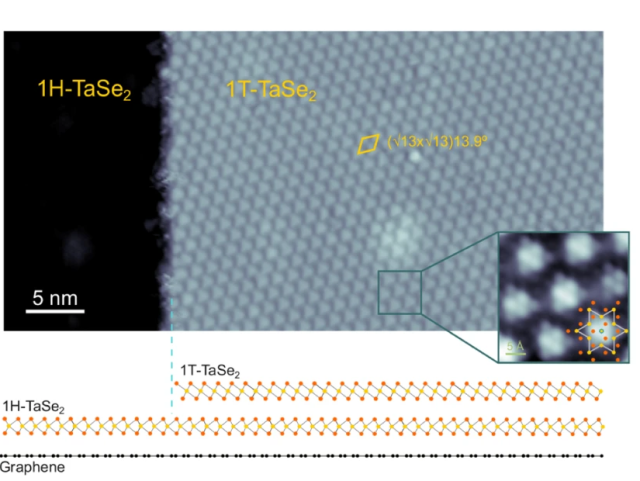Ground state coherence in a two-dimensional Kondo lattice
The scattering of conduction electrons in metals owing to impurities with magnetic moments is known as the Kondo effect, after Jun Kondo, who analysed the phenomenon in 1964. This scattering increases the electrical resistance and has the consequence that, in contrast to ordinary metals, the resistance reaches a minimum as the temperature is lowered and then increases as the temperature is lowered further.
The Kondo effect is a collective one involving an indirect exchange interaction of the conduction electrons with a paramagnetic impurity. Thus, a Kondo lattice is a set of localized magnetic impurities arranged in a regular pattern, which interacts with a bath of delocalized conduction electrons. The Kondo lattice introduces a new energy scale, related to a temperature T*, which plays the role of Kondo temperature, TK – the one limiting the validity of the Kondo results – in the sense that below T* the magnetic susceptibility starts being anomalously reduced due to partial screening.
The complexity of the Kondo lattice problem is best appreciated in comparison with the relative simplicity of that involving a single Kondo impurity. At temperatures below TK, a magnetic impurity coupled to a metal with Kondo exchange coupling starts developing singlet correlations with the conduction electrons and eventually becomes completely screened at T = 0 K. In a periodic array of such impurities, the magnetic moments also develop independent singlet correlations around TK. However, as the temperature is further lowered below a coherence scale T*, the competition between the Kondo exchange and other interactions between moments can drive the system to different ground states like a Kondo paramagnet or magnetically ordered state.
A microscopic understanding of the ground state of this coherent Kondo lattice remains a central problem in condensed matter physics, especially as more complex scenarios are also possible, where Kondo screening coexists with magnetic order. Understanding the nature and possible types of zero-temperature quantum critical points between such phases and their influence in a variety of phenomena has been experimentally hindered by the complexity and lack of tunability of the f-electron compounds like those based in ytterbium or cerium.
The observation of the Kondo effect in transition metal dichalcogenide (TMD) heterobilayers formed by vertical stacks of T- and H-type monolayers has recently opened a new, simple, and accessible platform to design artificial Kondo lattices. However, lower-temperature evidence for any coherence behavior of the Kondo lattice remains sorely lacking, and fundamental questions such as the ground state of these compounds remain unanswered.

Now, a team of researchers has addressed 1 this problem by performing high-resolution scanning tunneling microscopy/spectroscopy (STM/STS) experiments at 340 mK in a prototype 1T/1H-TaSe2 heterostructure. The measurements reveal the existence of two symmetric electronic resonances around the Fermi energy, a hallmark of coherence in the spin lattice.
Spectroscopic imaging locates both resonances at the central Ta atom of the charge density wave of the 1T phase, where the localized magnetic moment is held. On the other hand, the evolution of the electronic structure with the magnetic field reveals a non-linear increase of the energy separation between the electronic resonances.
Ab initio and auxiliary-fermion mean-field calculations show that this behaviour is inconsistent with a fully screened Kondo lattice, and suggests a ground state with magnetic order mediated by conduction electrons.
These results, i.e., the manifestation of magnetic coherence in TMD-based 2D Kondo lattices enables the exploration of magnetic quantum criticality, Kondo breakdown transitions and unconventional superconductivity in the strict two-dimensional limit, phenomena that remain a great challenge in the field.
Author: César Tomé López is a science writer and the editor of Mapping Ignorance
Disclaimer: Parts of this article may have been copied verbatim or almost verbatim from the referenced research paper/s.
References
- Wan, W., Harsh, R., Meninno, A., Sajan, S., Guo, H., Errea, I., de Juan, F., & Ugeda, M.M.(2023) Evidence for ground state coherence in a two-dimensional Kondo lattice. Nat Commun doi: 10.1038/s41467-023-42803-4 ↩